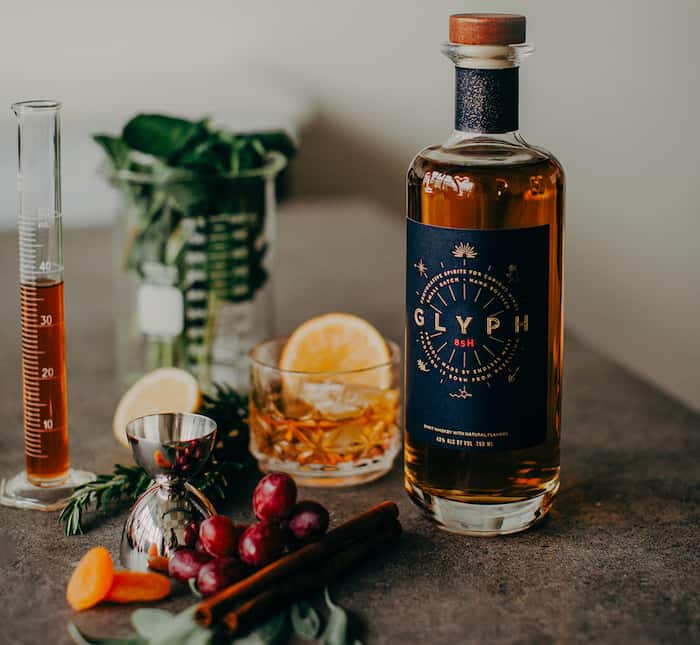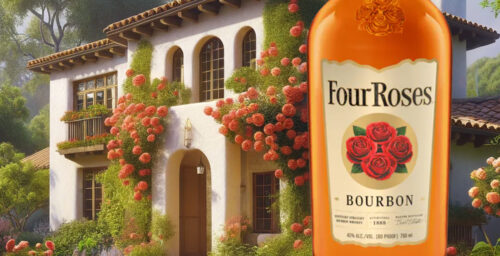Whiskey: It’s one of the most traditional industries in the global economy. In hundreds of years, its manufacturing process has seen only minor modifications. Sure, modern metalworking has decreased manufacturing times for stills, and there’s no doubt that assembly lines and global supply chain options have reduced costs for grain, barrels, and packaging materials, but the craft of whiskey making remains highly unchanged.
Ask most whiskey-makers about their work, and you’ll find a common theme: It’s an organic experience. Distillers’ cuts are made by taste and smell, not analytical tests. Specific barrels are chosen because the master blender personally decides they’re ready. Even the conditions in which the casks are aged are left totally up to mother nature, as rickhouses are not climate controlled.
There is an inherent tradition and romanticism that you’ll find surrounding these products, which is one reason why the use of technology is seen as a taboo subject for many whiskey drinkers.
“You can’t cheat time!” is probably the most repetitive phrase I’ve had thrown at me while discussing technology in the whiskey scene. This, of course, refers to the aging process for barreled spirits. Large distilleries and brands have sunk enormous amounts of money into building up stocks of aged products. So why such an emphasis on traiditionally aged spirits? Well, as any whiskey aficionado knows, barrel maturation transforms young, harsh whiskey into a complex symphony of flavors and aromas, but what happens inside of the barrel to achieve this?

Now, I could go on for pages about the interesting set of reactions that occur inside of a barrel, but let’s hit the highlights: As the temperature outside changes, the liquid inside the barrel expands and contracts, interacting with the charred oak matrix, extracting wood sugars and various aromatic compounds such as vanillin, guaiacol, and syringaldehyde. These help develop notes of toasted wood, vanilla, and spice.
Simultaneously, the change in temperature and concentration of ethanol helps push the reaction of harsh undesirables like carboxylic acids to their esterified states, yielding nuanced fruity flavors such as pear, apple, pineapple, and banana. Meanwhile, the formation of compounds like glycerides, phenols, and lactones changes the taste and mouthfeel of the drink as it ages. Hundreds of organic components are constantly participating in reversible reactions to eventually reach a complex profile over many years.
Pretty amazing, for something we discovered by mistake, right?
The past decade has yielded incredible scientific advances. We have learned how to reprogram stem cells, created computerized microchips that can mimic human brain function, and verified the existence of dark matter. So why is it that whiskey has seen so little technological innovation? One might point out that state-of-the-art analytical equipment like chromatographs, which measure flavor compounds in the parts-per-million range, are still not as sophisticated as the human palate, which commonly detects the same compounds on the parts-per-billion scale.
Others might argue that this tech already exists, but just doesn’t fit the industry narrative of whiskey making as an “art” (You may recall stories of the infamous “No Chemists Allowed” sign hanging outside of the old Stitzel-Weller distillery).
However, there are certainly a growing number of companies present in the innovation space. Oxley Gin uses vacuum distillation to help achieve gentler botanical flavors in their product. OZ Tyler Distillery, part of the Kentucky Bourbon Trail, uses ultrasonic energy to process their bourbon. Endless West has created a synthetic whiskey using lab-created flavor compounds, which they claim bested 20-year Pappy Van Winkle in a blind taste test. With quickly expanding markets in countries like India and China, it’s no surprise that tech groups like these are jumping at the chance to create cost effective spirits to meet the growing demand of a rising consumer class.
Whether or not whiskey purists agree with these approaches, there’s no stopping the fact that technology is becoming more and more prevalent in the spirits industry. Whiskey lovers want better quality alcohol at lower prices, and the consumer will be the ultimate decider on whether these technologies succeed or fail, but don’t we owe it to ourselves to make the best whiskey possible with all of the tools at our disposal?
As I sit here and sip on a glass of 20-year, single malt Deanston, I can’t help but feel that there will always be a place in the market for traditionally made whiskies, but I’m also excited to watch the whiskey landscape evolve and adapt. Emerging technology is offering the possibility of great whiskey at affordable prices, which means that you can buy even more bottles to share with your family and friends, and at the end of the day, isn’t that what whiskey is all about?







